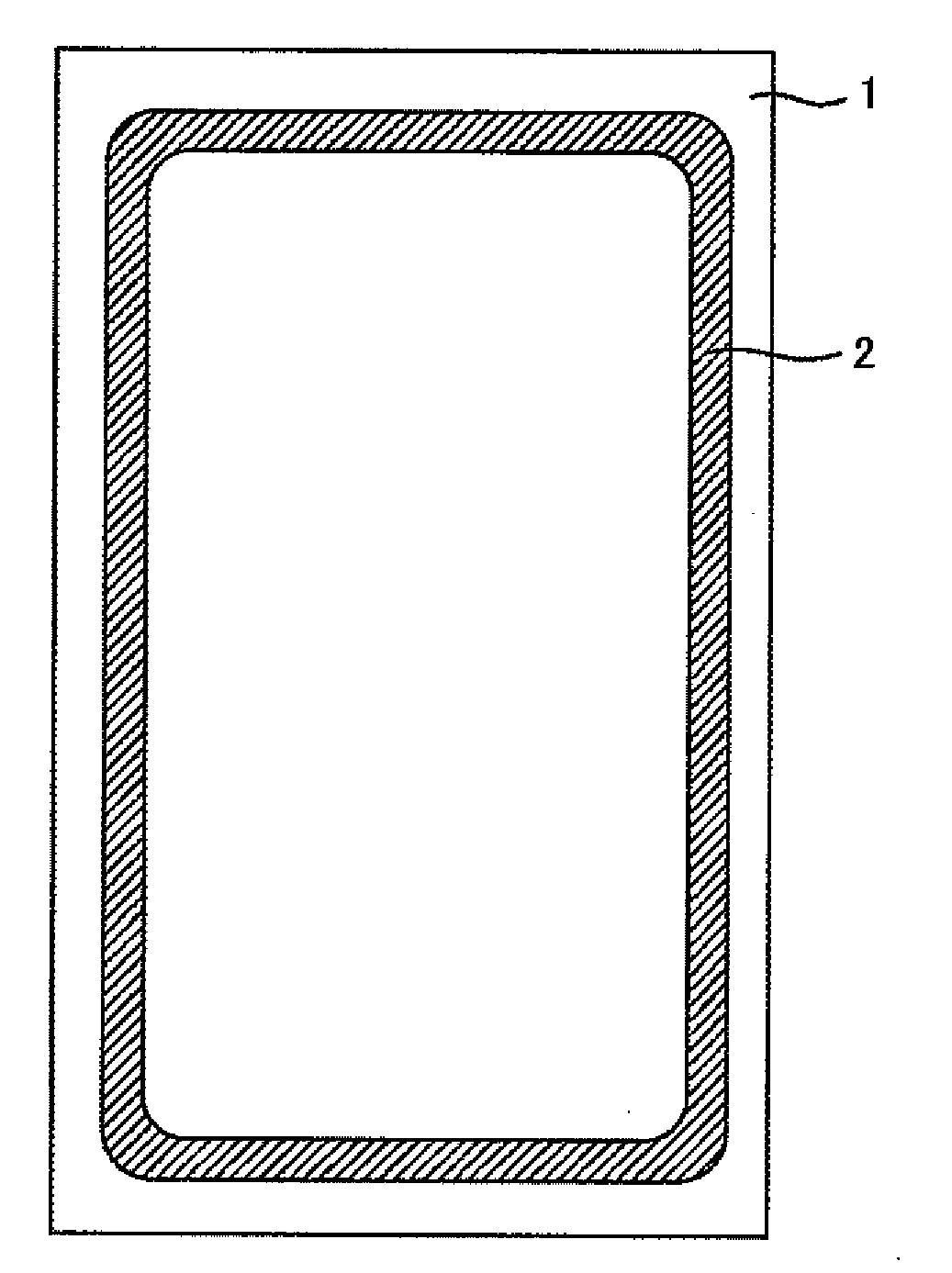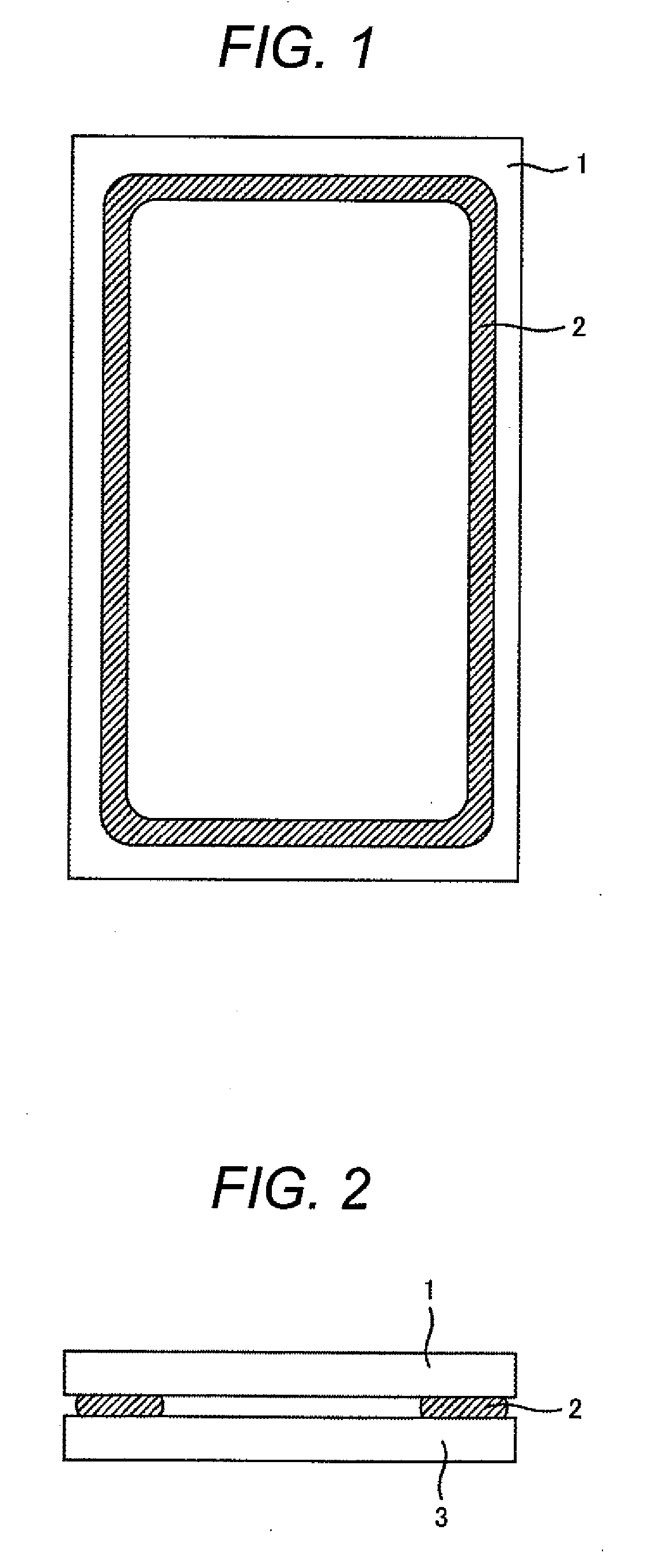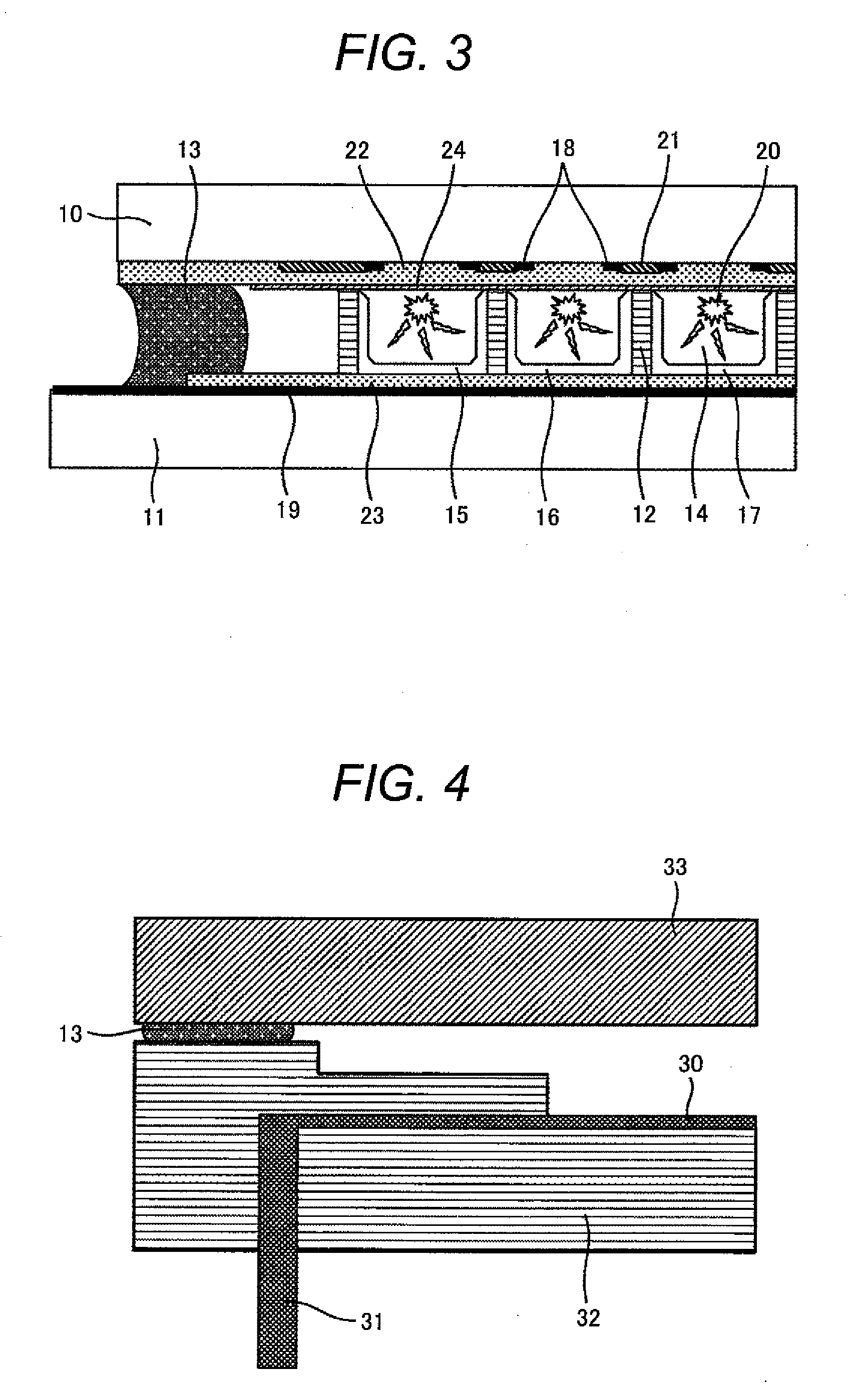Low softening point glass composition, bonding material using same and electronic parts
a technology of softening point glass and composition, applied in the manufacture of electrode systems, electric discharge tubes/lamps, conductive layers on insulating supports, etc., can solve the problems of difficult to achieve airtight sealing with high reliability, difficult to achieve airtight sealing at 420° c. or lower, and large thermal expansion coefficien
- Summary
- Abstract
- Description
- Claims
- Application Information
AI Technical Summary
Benefits of technology
Problems solved by technology
Method used
Image
Examples
example 2
[0061]Kinds and amounts of fillers to be added to the glass compositions were investigated in example 2. As fillers used were cordierite having an average particle size of 30 μm, amorphous silica having an average particle size of 10 μm, zirconium silicate having an average particle size of 25 μm, mullite having an average particle size of 40 μm, alumina having an average particle size of 5 μm, niobium oxide having an average particle size of 1 μm and tantalum oxide having an average particle size of 3 μm.
TABLE 4FillerAverage particle size (μm)F1Cordierite30F2Amorphous silica10F3Zirconium silicate25F4Mullite40F5Alumina5F6Niobium pentoxide1F7Tantalum pentoxide3
[0062]As low softening point glass compositions used were D17, 29 and 36 in Tables 1 to 3. These glass composition powders were ground and sieved to obtain glass powder having an average particle size of 3 μm so that the glass compositions soften at lower temperatures. Additive amounts of the fillers to the glass compositions w...
example 3
[0069]In example 3 metal electrodes using the low softening point glass compositions will be explained. Generally, the electrodes are prepared by coating a paste comprising metal powder, resin and solvent, drying and calcining. In this example, as the low softening point glass composition, G36 shown in Tables 1 to 3 having an average particle size of 3 μm was used. As the metal powder, aluminum powder having an average particle size of 2 μm, as resin polyethylene glycol and as solvent α-terpineol were used. Volume ratios of the low softening point glass composition G36 to aluminum powder were 5:95, 7:93, 10:90, 17:83 and 25:75. Thus, 5 kinds of electrode pastes were prepared and investigated. The prepared pastes were coated on alumina substrates by a printing method, dried and heated to 400° C. for 30 minutes at a temperature elevation rate of 10° C. / min to obtain aluminum electrodes.
[0070]As the amount of the glass powder of G36 in the aluminum electrodes formed on the alumina subs...
example 4
[0073]Example 4 will be explained by reference to PDP to which the low softening glass composition of the present invention was applied. A diagrammatic cross sectional view of PDP is shown in FIG. 3.
[0074]A front panel 10 and a back panel 11 are opposed with a gap of 100 to 150 μm to constitute a POP. The gap is maintained with partition walls 12. Peripheries of the front panel 10 and back panel 11 are airtightly sealed with sealing material 13, and rare gas is filled in the interior of the panels. The small spaces (cells 14) partitioned with the partition walls 12 are filled with fluorescence materials of red 15, green 16 and blue 17 to constitute pixels by three colors. Each pixel emits light of each color in accordance with signals.
[0075]The front panel 10 and the back panel 11 are provided with regularly arranged electrodes on their substrates. Display electrodes 18 of the front panel 10 and address electrodes 19 of the back panel 11 constitute pairs of electrodes between which ...
PUM
| Property | Measurement | Unit |
|---|---|---|
| softening point | aaaaa | aaaaa |
| temperature | aaaaa | aaaaa |
| softening point | aaaaa | aaaaa |
Abstract
Description
Claims
Application Information
 Login to View More
Login to View More - R&D
- Intellectual Property
- Life Sciences
- Materials
- Tech Scout
- Unparalleled Data Quality
- Higher Quality Content
- 60% Fewer Hallucinations
Browse by: Latest US Patents, China's latest patents, Technical Efficacy Thesaurus, Application Domain, Technology Topic, Popular Technical Reports.
© 2025 PatSnap. All rights reserved.Legal|Privacy policy|Modern Slavery Act Transparency Statement|Sitemap|About US| Contact US: help@patsnap.com



